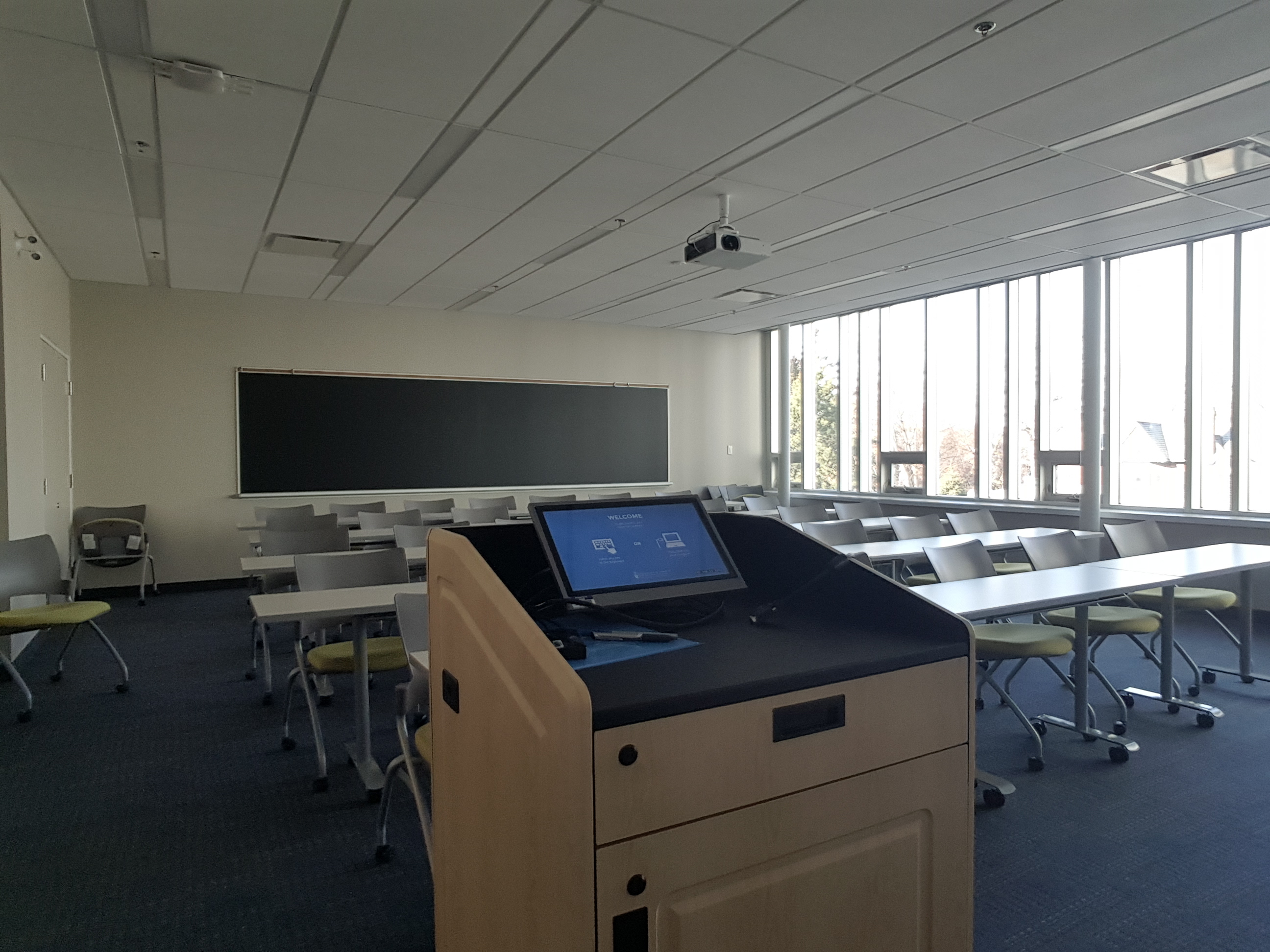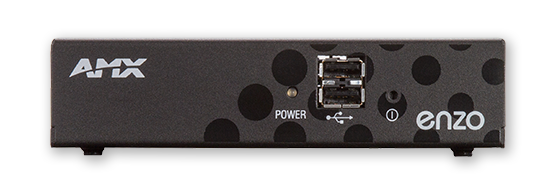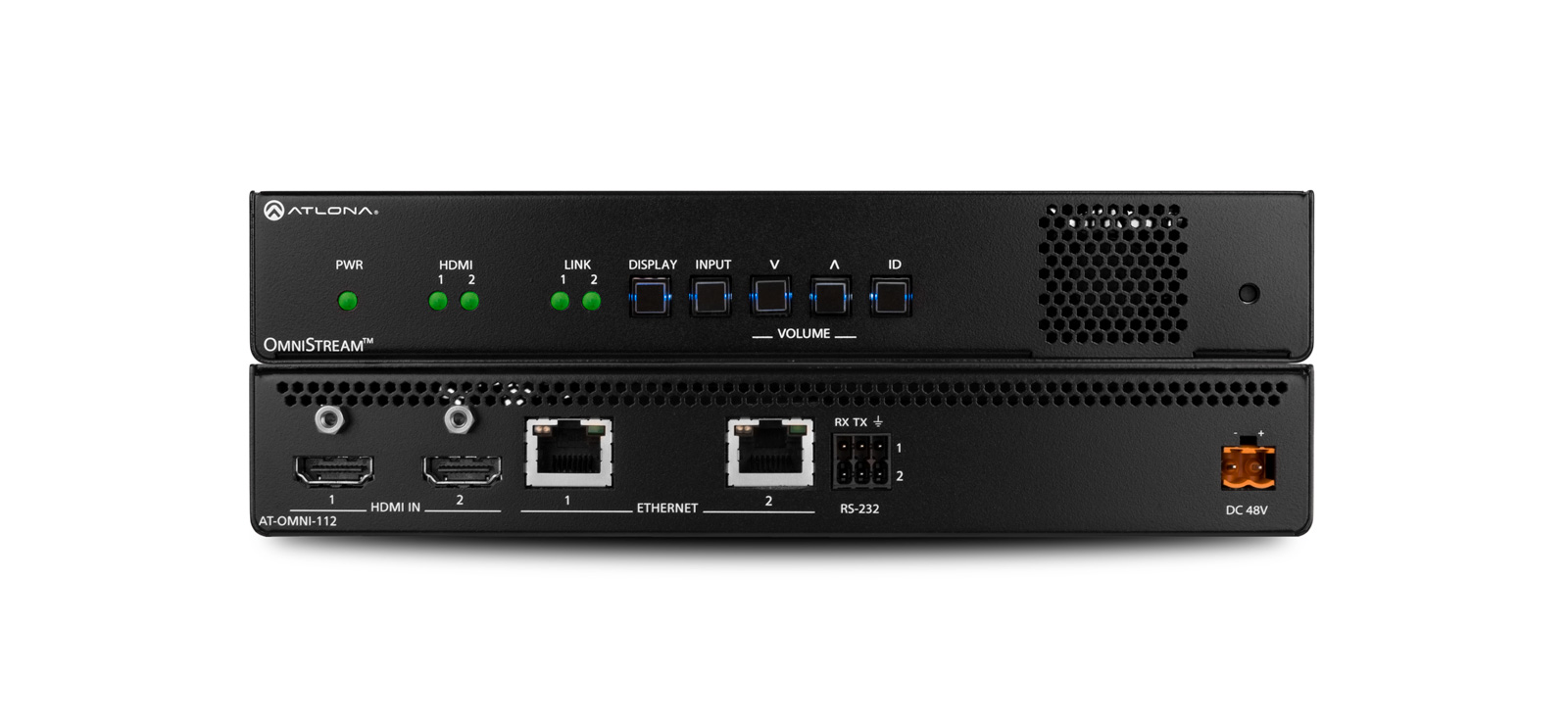Connected Classrooms
The classrooms of today are getting closer to becoming the classrooms of tomorrow—a long anticipated change by AV integrators. A big part of that change is AV systems that are being placed on the network, enabling greater connectivity, communications, and new learning possibilities that educators can leverage for their students' benefit.
"I think using networked AV to turn every classroom into an endpoint for broadcasting CCTV-like programming and information/signage directly to and between teachers, administration, and students will turn into a powerful platform that will seem like a no-brainer within five years," said Joe Fattorini, manager, K-12 sales and design, Presentation Products.
It is taking the K-12 market more time for adoptions than in higher education, as Fattorini pointed out, but that likely comes as no surprise to most integrators. "The schools are very reluctant to divert their budgets toward the cost of such an investment in infrastructure," he said. "They still seem driven to squeeze as many rooms of new equipment as they can with their budget, as this is the most direct student- and teacher-facing upgrade."
More higher-ed institutions, however, have been interested in the advantages of getting AV systems onto networks, and are more likely to have budgets that allow for it.
"More projects in higher education are incorporating AV on the network," said Bhanu Singh, the manager for higher education sales and design at Presentation Products. "The network allows the client to manage their rooms more efficiently, save college resources, and allow for remote system troubleshooting/diagnostics."
Furthermore, he says the ways colleges and universities can use the technology is just beginning to get interesting. "The most exciting part of networked AV is increased flexibility, scalability in collaborative spaces, student lounges, and being able to share information across all buildings and campuses," Singh said.

Just Add Power 3G Ultra HD Over IP Platform

Biamp TesiraLUX IDH-1

AMX Enzo

Atlona OmniStream
The Need For Flexibility
As more campuses see the benefits of networked systems, more manufacturers are providing technology solutions to meet a range of needs. For instance, because of increased applications that incorporate flexible, collaborative learning spaces, Biamp shows how its networked-based video transport solutions can support these fluidly designed areas on campus.
A daily selection of the top stories for AV integrators, resellers and consultants. Sign up below.
"How to support the technology needs of new educational techniques including active learning classrooms—where students are taught as both a single group as well as broken into different pods working more independently—is being reevaluated, and more universities are moving to networked-based video transport solutions like Biamp’s TesiraLUX to enable these new methodologies," said Steve Kawasaki, sales development director, Western N.A., Biamp. "There is also the ever-increasing pressure for AV solutions to be easier to deploy, manage, and operate; end-user expectations demand that technology not only provides a 'higher quality user experience,' but is also extremely reliable as well as dramatically easier to use."
Biamp's TesiraLUX IDH-1 fits that bill. An AVB/TSN-enabled video encoder capable of transmitting video signals up to and including 4K60, the IDH-1 functions as a video server-class device in a Tesira media system and is configured through the Tesira configuration software. It can fully integrate digital audio and video on a single network, and multiple software-based options are available for managing bandwidth, including setting maximum resolution, frame rate floor, and/or a rate of compression. AVB/TSN streams can be transmitted over 1Gb or 10Gb ports, while control signals are managed via a separate 1Gb Ethernet port. Additionally, the IDH-1 accepts 8 channels of PCM audio for embedding/de-embedding, and includes 2 mic/line level analog inputs.
For those institutions looking to increase flexibility of their system over time, the Just Add Power 2GΩ/3G transmitter, which can be installed in 2G and 3G systems, combines the enhanced audio and feature-set of the 3G system with the maximum 1080p resolution of 2G devices. In 2G systems, a 2GΩ/3G transmitter is a direct replacement to a 2G transmitter and functions just like a 2G device. In 3G systems, a 2GΩ/3G transmitter provides a lower-cost solution for sources that output 1080p resolution or lower. This provides the opportunity to build a 2GΩ system with 4K expansion plans, or to mix and match with 2GΩ on 1080p sources and 3G on 4K sources.
Security Concerns
For transporting video—especially in an educational setting—security may be just as important as flexibility and ease of use. The key to a successful installation, though, is knowing exactly what your client requires.
"Security really comes down to communications and to understanding the exact security concerns of a specific institution," said Michael Crisci, Atlona's business development manager, AV over IP and strategic alliances. "From the manufacturer perspective, it’s about having the appropriate security tools available in their platforms. Software-defined platforms will have the flexibility to add new security features without a hardware revision. That’s an enormous benefit for everyone involved."
To address this, Atlona offers the OmniStream 112. Delivering 4K video using SMPTE VC-2 visually lossless compression (SMPTE 2042), the OmniStream 112 features built-in security and network error resilience, with selectable AES128 encryption for securing sensitive or protected AV content. This AVoIP platform also features SMPTE 2022 forward error correction, ensuring robust performance over large network installations.
Focus On K-12
The interest in networked AV isn't completely absent in K-12, of course. Though the uses are comparable to those of higher-ed, concerns in K-12 often increase around emergency and monitoring implementations.
"The idea of network control and monitoring of classrooms AV systems seems appealing to most schools, but it seems still pretty rare, unless part of new construction or massive renovations, that network drops would pulled to the AV locations for this purpose," said Presentation Products' Fattorini. "Often the need is simply to have the emergency paging override the local AV in the classrooms as part of life/safety and ADA requirements."
Even so, considerations often come down to how these uses will impact the institution's network, says Frank Covelli, director of sales, education, at AMX, whose SchoolView solution is designed to manage school safety.
"Our solution rides on their existing network, and, because it is multicast, it has very little impact on their network," he explained. "Integrators want to know how easy it is to install networked AV in these schools. With SchoolView, there is no programming involved, so it is all configured on the existing network."
A user-friendly touchpanel, which is accessible utilizing an existing IP network, makes SchoolView easy to implement, allowing non-technical users to manage safety systems, emergency alert notifications, bells, clocks, PA announcements, digital signage, and streaming video.
"The challenge is both on the integrator and end user, to get them to understand how easy it is to install our system on the school's existing network," Covelli said. "In most cases these fears are overcome after our initial meeting, and, in some cases, a network assessment."
What Is The Classroom Of The Future?
"The idea of interactivity is no longer about touchscreens or SMART boards, but about using technology to connect students to teachers and other students as easily as they get to videos and information via Google," said Fattorini, who added that the next step is to connect classrooms to other classrooms—nearby and around the globe. "I am excited for the moment when heads of schools realize that networked AV could be a very affordable way of leveraging mostly existing equipment to expand communication and connectivity throughout a campus."
As business becomes more global, it only makes sense for education to do the same. Because of that it is, perhaps, imperative to prepare students for the collaborative, expansive careers they'll possibly enter after school.
"What excites me most is how universities are developing pedagogical programs that incorporate the latest technological advances that empower and nurture collaborative student learning," said Biamp's Kawasaki. "The advancement in projection, lighting, sound, and video all increase the comprehension of the information that students are exposed to. Networked AV systems enable significant flexibility and unprecedented agility in the integration and efficient utilization of all the different multimedia educational content that is becoming available. It really is an exciting time."
